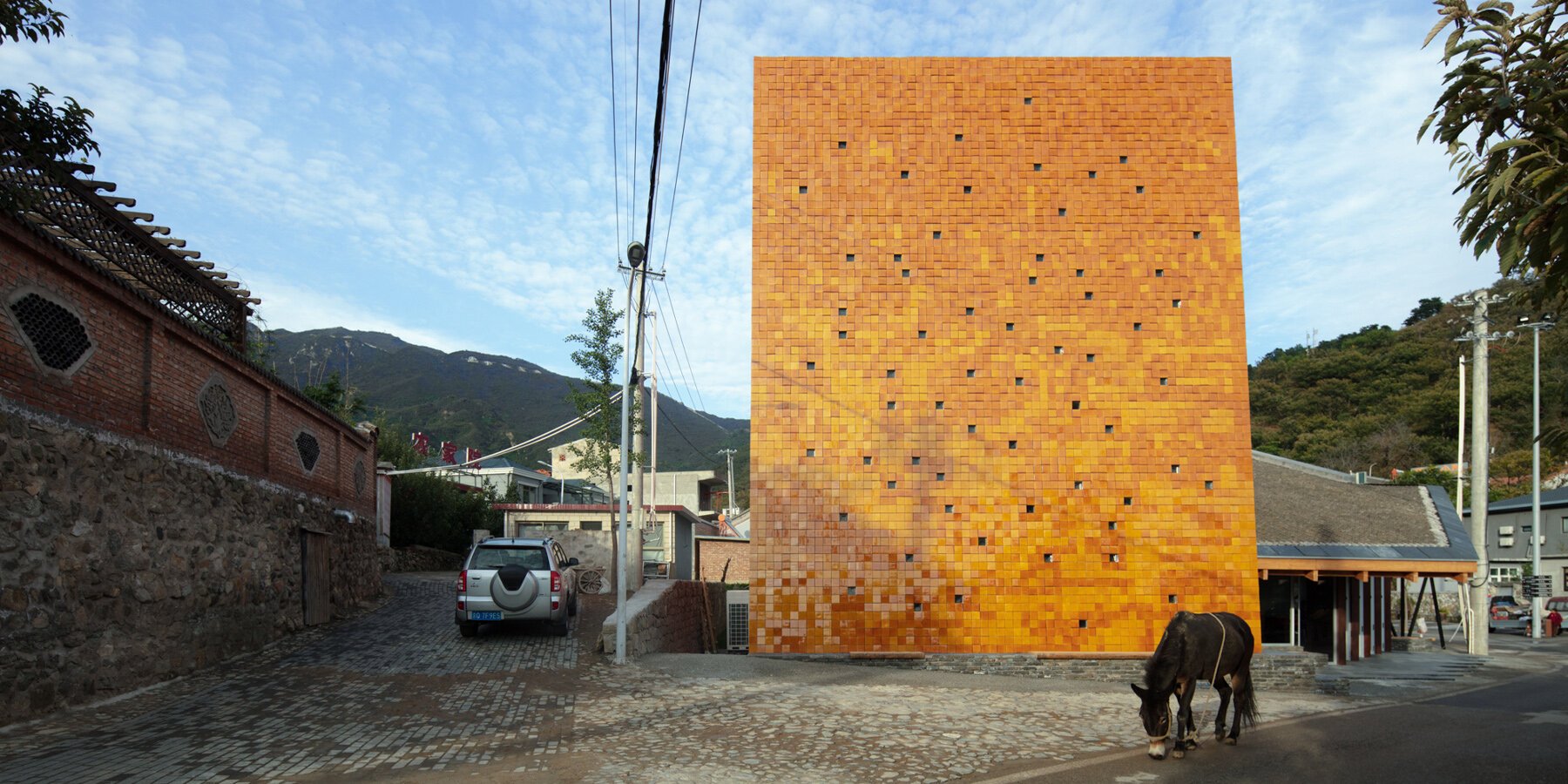
WAAAM by IILAB. is part of a rural revitalization project in beigou
Beigou Village, situated on the outskirs of Beijing, has retained its traditional appearance despite China‘s rapid modernization. In 2005, a new village committee secretary envisioned transforming Beigou into a garden-like countryside. Two ‘Environmental Revolutions’ in 2007 and 2015 kickstarted this transformation, aiming to alter perceptions of the village as a backward rural area to one with a valuable cultural heritage. External investments, like a hotel conversion by an American couple and support from the 2049 Investment Group, further catalyzed development. Collaborations with architecture studio llLab. led to architectural interventions, namely WAAAM, which serves as a testament to the broad and meaningful impact that rural revitalization has brought to the community. With its glazed yellow facade, the museum commemorates the pioneering attitude of Beigou.
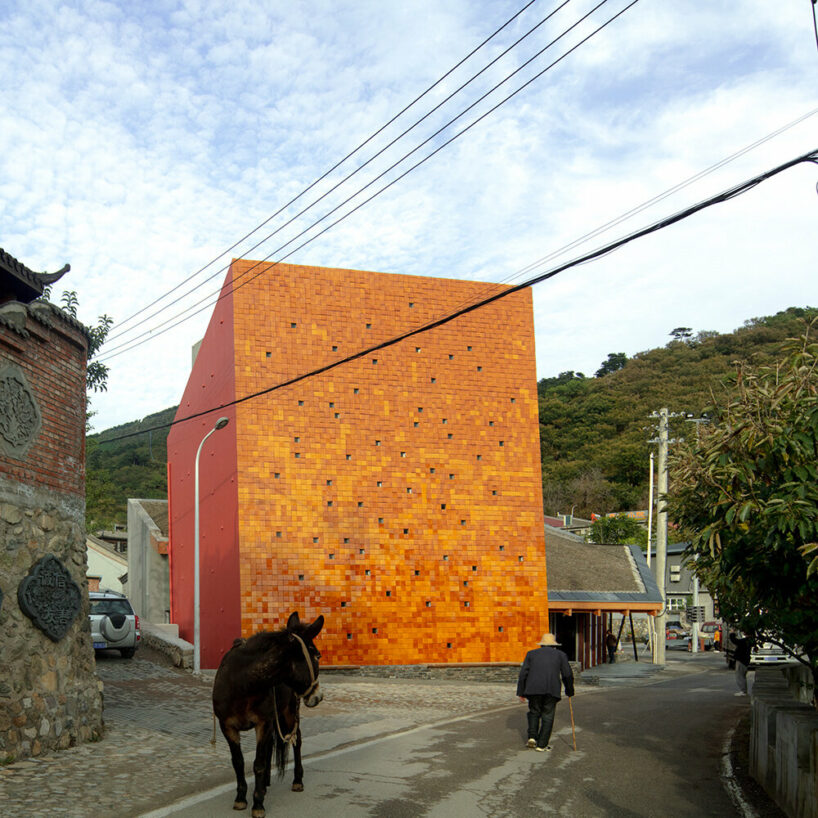
all images © Arch-Exist Photography
a duality of tradition and modernity
According to the llLab. team, the concept behind the WAAAM museum relies on site history, the villagers’ daily lives, and the integration of traditional craft. The building negotiates the duality of the new dynamic sense of place in the village with the different eras, ideologies, and cultural generations that have claimed this village as their own before. It takes a critical approach to local materials by positioning them in a new light, expressing their features with a more artistic and modern sensibility. Similarly, the exhibition spaces mark the radical collision of cultural eras — designed to act as a platform for communication between the permanence of Beigou and the ever-changing avant-garde consciousness of people. Ultimately the building records the context of the past, the ambitions of the presents while embracing the uncharted territory of the future.
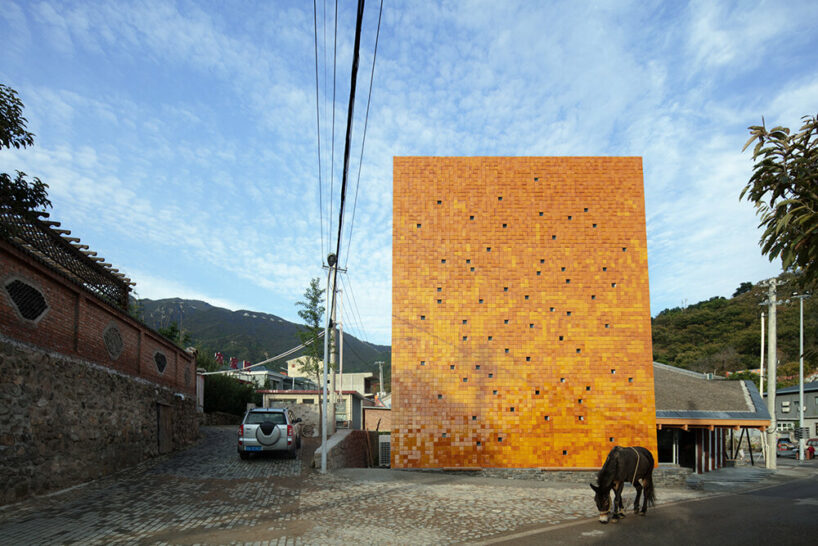
WAAAM museum relies on site history, villagers’ daily lives, and integration of traditional craft
three thematic spaces denoting past, present & future
IILab. structures WAAAM around three thematic interior spaces: Beigou Memory, Beigou Now, and Beigou Future. The first, Beigou Now, located near the entrance, welcomes visitors into the museum and includes functional areas such as a cafe, a community activity room, and outdoor rest areas. Beigou Memory sits at the base of the original historic building and encompasses the main exhibition spaces. This includes the History of Beigou exhibition, a display showcasing the historical records of the original building, and an exhibition on the village’s architectural culture. This building also houses the multifunctional hall on the second floor, which can serve as an academic lecture hall, temporary exhibition hall, or meeting hall. Lastly, the Beigou Future tower hosts an exhibition space within its main staircase, a building services area on the first floor, and a terrace overlooking the Great Wall on the top floor.
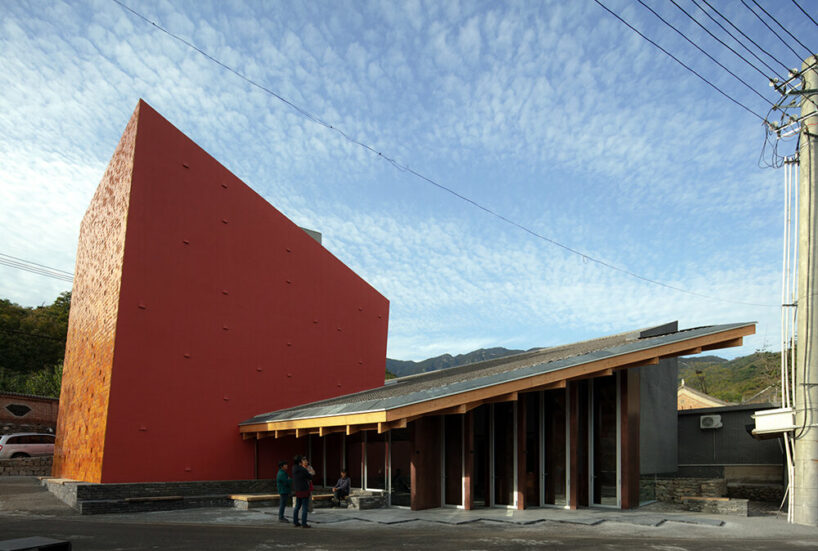
the project by IILab. is part of a rural revitalization initiative in Beigou
‘Beigou Village is now a model to rural China through its pioneering approach to rural development. Combining environmental, cultural and architectural development as drivers for urban revitalization and social transformation. […] The shift from outlier to cultural center has not only affected Beigou but it has also started a new revolution in the neighboring villages in the north. Over the last ten years, each village has gradually started to pioneer initiatives that celebrates their own unique cultural identity and social character,’ concludes IILab.
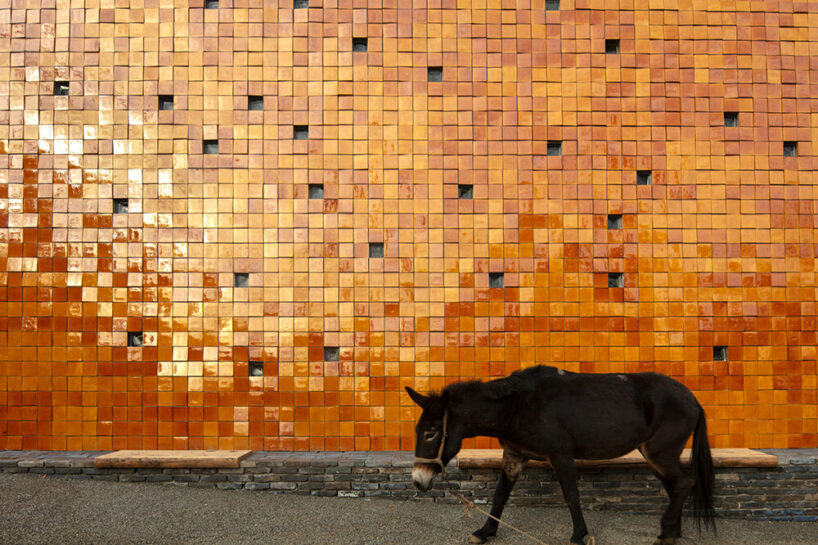
glazed yellowish tiles front the WAAAM museum
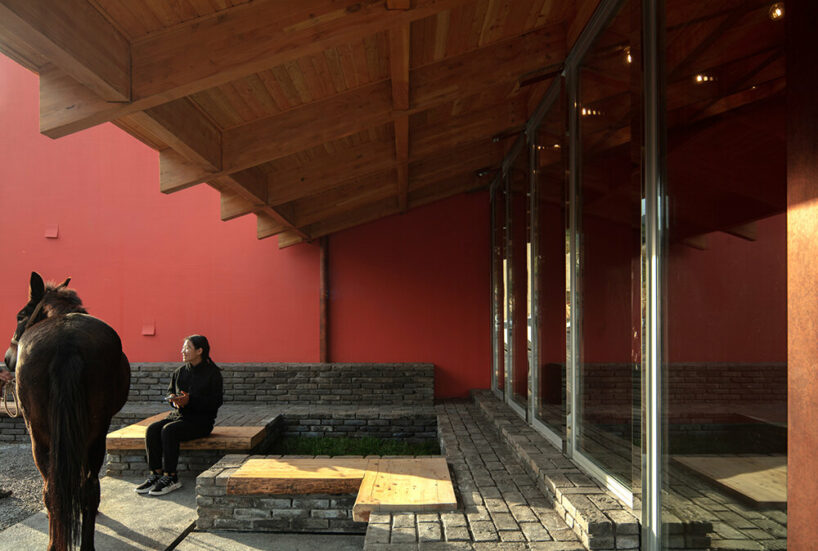
Beigou Now, located near the entrance, welcomes visitors into the museum










